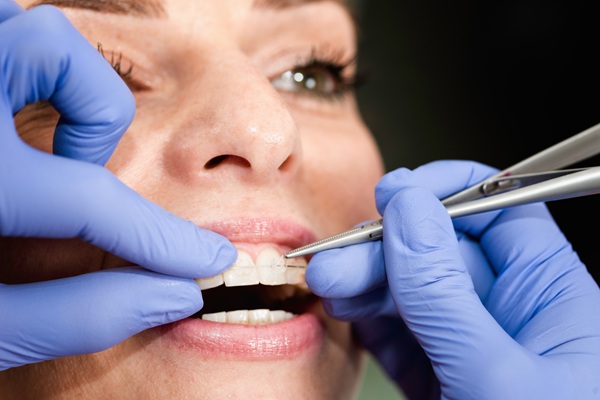What to Consider with Ceramic Braces for Teeth straightening

Ceramic braces are a subtler version of traditional metal braces. Both appliances work by applying a constant force on the patient’s teeth, slowly improving their alignment. Metal braces are made up of metal brackets that are cemented to each of the patient’s teeth and wires that connect the brackets. Tightening these wires increases the force placed on the patient’s teeth.
Ceramic braces also use brackets and wires to improve the alignment of the patient’s teeth, but the metal parts are switched out with more aesthetically pleasing ones. Instead of metallic parts, the patient gets tooth-colored or transparent brackets and wires. This makes ceramic braces less noticeable when worn.
That is a massive deal since some people avoid getting teeth straightening treatments to avoid dealing with a mouthful of metal wires and brackets. Their concerns are understandable since metal braces look like miniature rail tracks on a person’s teeth.
Important things to go over when considering ceramic braces
Ceramic braces work the same way traditional metal braces straighten teeth, so they can be used to fix similar issues. However, the metal components of traditional braces are more durable than the tooth-colored components of ceramic braces, so the former is less likely to become damaged over the course of the patient’s treatment. Dentists often recommend metal braces for severe bite issues that might require braces for up to three years.
Some of the benefits of choosing ceramic braces over traditional ones include:
- Less painful experience: The tooth-colored components of ceramic braces are gentler on soft tissues in the mouth like the cheeks and gums. That leads to less discomfort and pain during treatment
- Hard to notice: Ceramic braces allow patients to straighten their teeth without announcing it to the world. The brackets and wires of the appliance are barely noticeable, so the wearer does not have to explain why they have some contraption in their mouth every time their teeth are revealed
- Durable enough: Ceramic braces might not be as durable as metal braces, but they are sturdy enough to address most bite issues
- Cost-effective: Ceramic braces cost a little more than metal braces, but they are typically more affordable than other discreet ways to improve teeth alignment like the use of clear aligner trays
Some of the drawbacks that come with ceramic braces include:
- Larger brackets: Ceramic braces come with larger brackets than those that come with traditional braces. However, these brackets being tooth-colored makes them less noticeable than smaller metal brackets
- Can lead to staining: As is the case with metal braces, ceramic braces cover up parts of the patient’s teeth, making it harder to clean them. The color from the rubber bands used to hold the appliance in place can also stain teeth
- Not as durable as metal braces: Ceramic braces are not designed to handle as much stress as metal braces. Patients who need extensive teeth straightening might have to deal with metal braces
We can straighten your smile
Want straighter teeth? Call or visit our Dubuque clinic to learn more about popular teeth straightening options.
Request an appointment here: https://www.bracesbyabbadent.com or call Braces By Abbadent at (563) 484-5202 for an appointment in our Dubuque office.
Check out what others are saying about our services on Yelp: Read our Yelp reviews.
Recent Posts
You may have seen someone wearing ceramic braces without even knowing it. These are most well-known for their discreet appearance and are ideal alternatives for patients who are concerned about how noticeable their braces would look. Read on to learn more about why ceramic braces are trusted among orthodontic professionals.Ceramic braces are among the most…
Space maintainers are great resources that are used in dentistry and orthodontics. They are small, metal dental pieces that are placed where a tooth once was, whether it be an adult or baby tooth. Keep reading to find out more about space maintainers.Outlined below are a few things to know about space maintainers, including what…
Orthodontic treatments are not just for children and teenagers. Adult braces are becoming increasingly popular due to advancements in orthodontic technology and the growing awareness of the importance of a healthy, well-aligned bite. For those considering adult braces, there are a few key things to remember before starting the journey toward a straighter smile. Misaligned…
Teeth straightening is a popular dental procedure for people who want to improve their smile. There are several methods that people can choose from that can resolve a wide range of dental issues. If you want straighter teeth, you can definitely benefit from orthodontic treatment. Read on to learn about the different types of braces…


